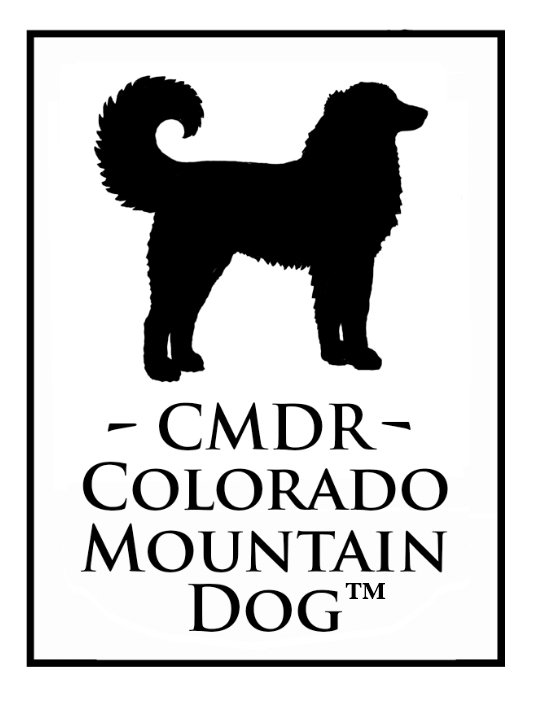~ Articles ~
Can My Dog Be Registered As A CMD Foundation?
When we look at new dogs coming in what we look for initially is function and physical type which comes close to the CMDR standard. We have changed in regard to a dog’s breed cross, due to reality winning out over narrative and myth.
Here is a great case in point: An owner had a purebred Anatolian Shepherd who killed livestock. The owner kept the dog for years and invested in trainers, but never did break the dog of killing, and of failing to guard from outside predators. She sold the dog and purchased a GP/Anatolian cross. The arrival of the dog was like the arrival of an angel. Suddenly her animals were safe, outside predation stopped, the dog was friendly to all guests and watched the children. On hearing about the CMD program, the owner knew her dog was a fit! She contacted us, and after hip tests we entered her dog as a G1. Soon after that, the owner did a DNA test and called us stricken. The dog had tested 25% hunting hound.
We did not put this dog off of the database! If we had included the purebred Anatolian and excluded this highly functional LGD cross, we would have been blind purists. The problems in the breeding of the aggressive AS were caused by purism and poor selection. Selection of traits for function is everything, not breed name tags. Plus, as every authentic breeder knows, the pups, when crossed back into LGD lines, will be only 12 percent…the next generation 6 percent, and by the time we are at the sixth generation G5, the outside percentage is vanishingly small. Yet with selection, everything that made this dog a highly useful guardian for small acreage will have been preserved.
Another reason for the change is that most people who propagate dogs function on shallow narratives until experience with genetics causes the fads to break down. Our protocols facilitate genetic nerds. We even have a CMDR genetic Nerd Award. We DO have a standard and we expect that by the time a dog reaches the G5, 6th generation (FD through G1 to G5), it will be high percentage LGD breed make-up. But the decision to allow he random genetics that can be added in the loose fields of the American LGD also contributes to health and genetic diversity. Genetics is a pyramid. While mpst breed organizations focus on breed names and the perfection of traits, they forget genetic diversity, arrive at the peak of perfection at the tip of the pyramid, have nowhere to go genetically, and collapse into a coefficient black hole.
The CMDR focuses as much on diversity as it does the honing of traits. We have a long long road ahead. We are not headed towards a genetic cliff. Each newly entering dog is selected by function, temperament, intelligence, healthy hips, and by resemblance to the physical standard.
If a dog candidate is a purebred, he can only come in as an FD, or Foundation Dog. If a dog is a cross and parent or grandparent info is known, he may be able to come in as G1 or G2. A purebred may not be bred to the same breed. If you have two GPs, what you are raising is GPs, not CMDs.
We look at is temperament. We are looking for dogs who greet human guests to their farm with no barking, and with affection. It is a given that LGDs are loving to their families, but not all LGDs accept human guests. We are developing a dog who can work easily on a small acreage farm with families and with all the farm visitors, so we are looking for a very relaxed temperament., in a dog who is intelligent enough to guard and to discern a threat and respond accordingly.
In regards to physical type, we do have a standard and it is posted in this article section. But in general we are heading towards a dog that is not thickly built, but tall, rather slender, and with medium length body coat, long tails, thick manes. Most CMDs are white, or faded badger, or tan with black points, but color is not a concern.
We stress temperament and guarding ability over type, at this time in our development. But we are on a road to hone type, as well.
We are looking for dogs that are quiet. This is one of the most important traits for a dog that works on small acreage. We ask breeders to fix dogs that bark nonstop, whether they are from known CMD lines or not. One of the most important traits is infrequent and discerning barking. Dogs should not bark at people. Some of these behaviors are trainable, but genetics plays a big part.
We are also looking for dogs that don’t put a great effort into escaping pens, and who don’t wander. Some LGD breeds were bred to wander for a long ways, and bark incessantly. These traits don’t work for a small acreage, so we focus on dogs that stay home and are quiet.
We will only add dogs who are working with livestock on farms, and who display the traits we are seeking.
If you have a working LGD that you think fits, we’d love to hear about it! Email wendyjfrancisco@gmail.com .

